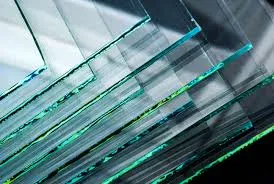Architectural Glass Solutions Transforming Spaces with Elegance and Functionality
In the rapidly evolving world of architecture, glass has emerged as a vital component in creating modern, innovative designs. Architectural glass solutions not only enhance the aesthetic appeal of buildings but also significantly improve functionality, energy efficiency, and sustainability. This article delves into the various types of architectural glass solutions, their benefits, and how they are transforming the architectural landscape.
Types of Architectural Glass Solutions
1. Insulated Glass Units (IGUs) These are composed of two or more glass panes separated by a space filled with argon or krypton gas, offering superior insulation. IGUs reduce heat transfer and are instrumental in improving energy efficiency within buildings. When used in commercial and residential applications, they help maintain a comfortable indoor climate while reducing heating and cooling costs.
2. Low-E Glass Low-emissivity (Low-E) glass is coated with a thin layer of material that reflects heat back into the building during winter and reflects external heat during summer. This technology enhances thermal insulation, making it an excellent choice for energy-conscious designs. Low-E glass not only contributes to energy savings but also minimizes glare and protects interior furnishings from UV damage.
3. Tempered Glass This type of safety glass is treated with heat to increase its strength. It is five to six times stronger than standard glass and, when broken, shatters into small, blunt pieces instead of sharp shards, reducing the risk of injury. Tempered glass is commonly used in areas that require safety, such as shower enclosures, glass doors, and facades.
4. Laminated Glass Comprising two or more layers of glass bonded with an interlayer, laminated glass offers exceptional strength and sound insulation. In addition to its safety features, it provides excellent acoustic properties, making it an ideal choice for buildings in noisy urban environments. Moreover, laminated glass can be manufactured with various tints and patterns, offering design flexibility.
5. Smart Glass This innovative technology incorporates electronic elements that allow the glass to change its opacity or color in response to external factors like sunlight or electricity. Smart glass not only enhances privacy but also regulates heat, contributing to energy efficiency. It is increasingly being used in modern offices, residential buildings, and even vehicles.
6. Decorative Glass Solutions Architectural glass can be customized with various textures, colors, and patterns to create stunning visual effects. Options like stained glass, etched glass, and printed glass enhance a building's character while providing the desired level of privacy and light diffusion.
Benefits of Architectural Glass Solutions
architectural glass solutions
Architectural glass solutions offer numerous advantages that make them an integral part of modern architecture
- Aesthetic Appeal Glass allows for open, airy designs, maximizing natural light and providing unobstructed views
. It enhances the visual connection between indoor and outdoor spaces, fostering a harmonious environment.
- Energy Efficiency With advancements in glass technology, buildings can achieve better insulation, reducing the reliance on heating and cooling systems. This results in lower energy bills and a reduced carbon footprint.
- Versatility Architectural glass can be used in various applications, including facades, windows, skylights, and interior partitions. Its versatility allows architects to explore creative designs and adapt to different building styles.
- Safety and Security Many architectural glass solutions offer enhanced safety features. Tempered and laminated glass, for instance, provide strength and resistance to impacts, ensuring the safety of occupants.
- Sustainability The use of energy-efficient glass technologies contributes to sustainable architecture. By reducing energy consumption, these glass solutions align with global efforts to create environmentally friendly buildings.
Transforming the Architectural Landscape
Architectural glass solutions are revolutionizing the way we design and interact with our built environments. Architects and designers are increasingly recognizing the potential of glass not just as a structural element, but as an integral part of a building's design narrative. The combination of functionality, safety, aesthetics, and sustainability makes architectural glass an indispensable resource in contemporary architecture.
As we move toward a more sustainable future, the role of architectural glass solutions will only grow, providing architects with the tools needed to create inspiring spaces. With their ability to blend beauty with efficiency, glass solutions are set to redefine our understanding of modern architecture and elevate the quality of our living and working environments.
 Afrikaans
Afrikaans  Albanian
Albanian  Amharic
Amharic  Arabic
Arabic  Armenian
Armenian  Azerbaijani
Azerbaijani  Basque
Basque  Belarusian
Belarusian  Bengali
Bengali  Bosnian
Bosnian  Bulgarian
Bulgarian  Catalan
Catalan  Cebuano
Cebuano  Corsican
Corsican  Croatian
Croatian  Czech
Czech  Danish
Danish  Dutch
Dutch  English
English  Esperanto
Esperanto  Estonian
Estonian  Finnish
Finnish  French
French  Frisian
Frisian  Galician
Galician  Georgian
Georgian  German
German  Greek
Greek  Gujarati
Gujarati  Haitian Creole
Haitian Creole  hausa
hausa  hawaiian
hawaiian  Hebrew
Hebrew  Hindi
Hindi  Miao
Miao  Hungarian
Hungarian  Icelandic
Icelandic  igbo
igbo  Indonesian
Indonesian  irish
irish  Italian
Italian  Japanese
Japanese  Javanese
Javanese  Kannada
Kannada  kazakh
kazakh  Khmer
Khmer  Rwandese
Rwandese  Korean
Korean  Kurdish
Kurdish  Kyrgyz
Kyrgyz  Lao
Lao  Latin
Latin  Latvian
Latvian  Lithuanian
Lithuanian  Luxembourgish
Luxembourgish  Macedonian
Macedonian  Malgashi
Malgashi  Malay
Malay  Malayalam
Malayalam  Maltese
Maltese  Maori
Maori  Marathi
Marathi  Mongolian
Mongolian  Myanmar
Myanmar  Nepali
Nepali  Norwegian
Norwegian  Norwegian
Norwegian  Occitan
Occitan  Pashto
Pashto  Persian
Persian  Polish
Polish  Portuguese
Portuguese  Punjabi
Punjabi  Romanian
Romanian  Russian
Russian  Samoan
Samoan  Scottish Gaelic
Scottish Gaelic  Serbian
Serbian  Sesotho
Sesotho  Shona
Shona  Sindhi
Sindhi  Sinhala
Sinhala  Slovak
Slovak  Slovenian
Slovenian  Somali
Somali  Spanish
Spanish  Sundanese
Sundanese  Swahili
Swahili  Swedish
Swedish  Tagalog
Tagalog  Tajik
Tajik  Tamil
Tamil  Tatar
Tatar  Telugu
Telugu  Thai
Thai  Turkish
Turkish  Turkmen
Turkmen  Ukrainian
Ukrainian  Urdu
Urdu  Uighur
Uighur  Uzbek
Uzbek  Vietnamese
Vietnamese  Welsh
Welsh  Bantu
Bantu  Yiddish
Yiddish  Yoruba
Yoruba  Zulu
Zulu 

